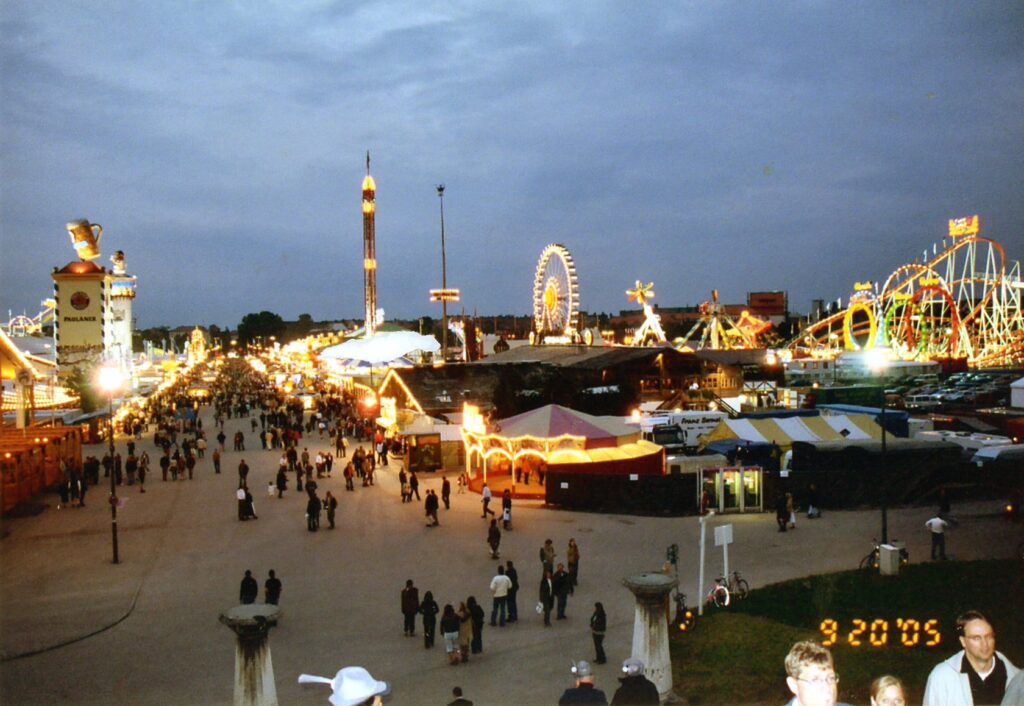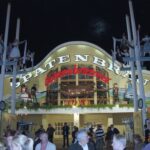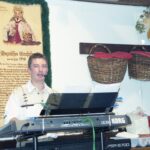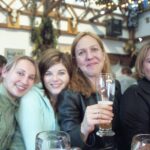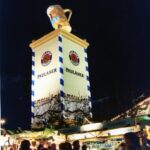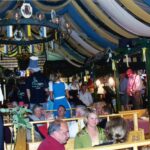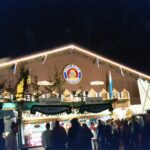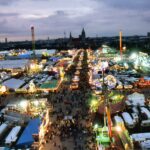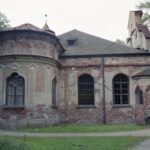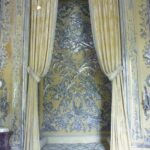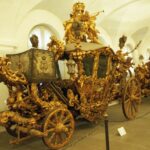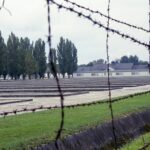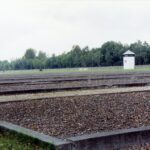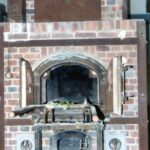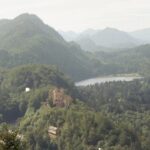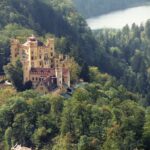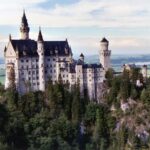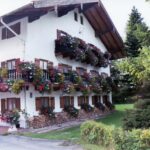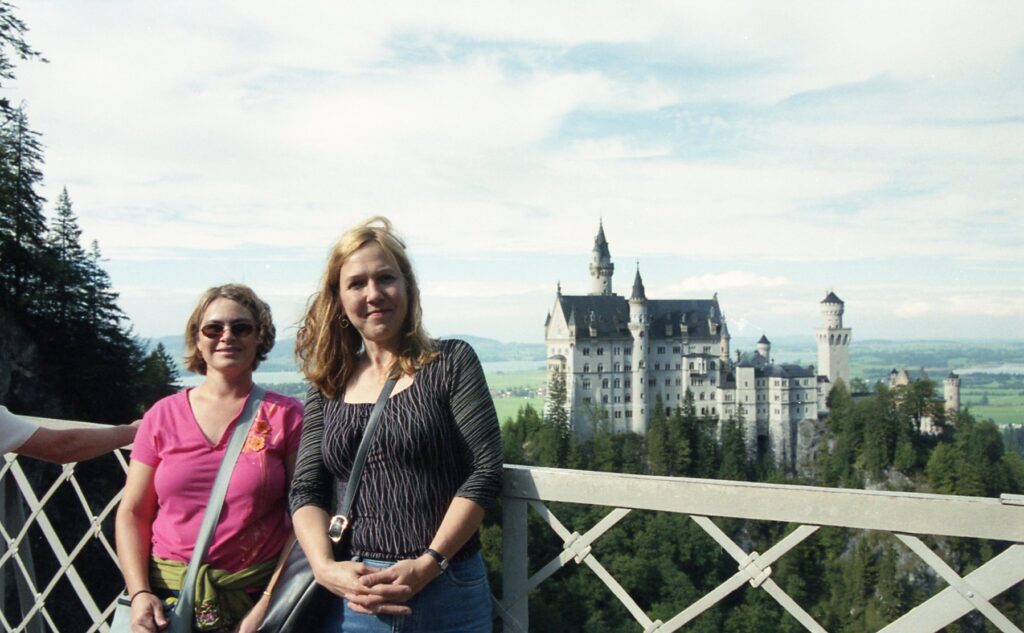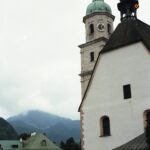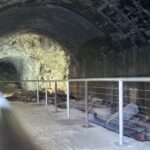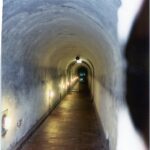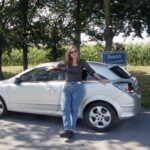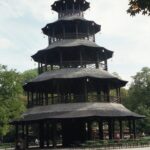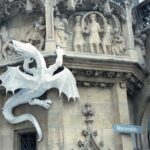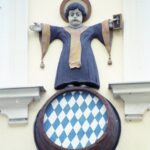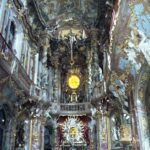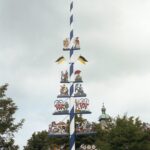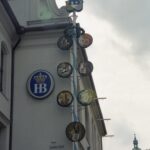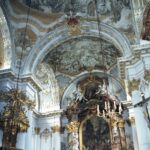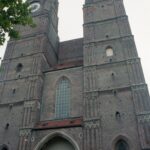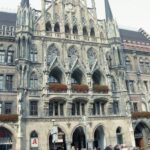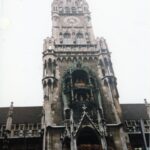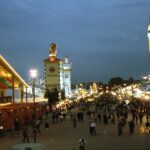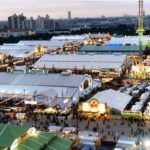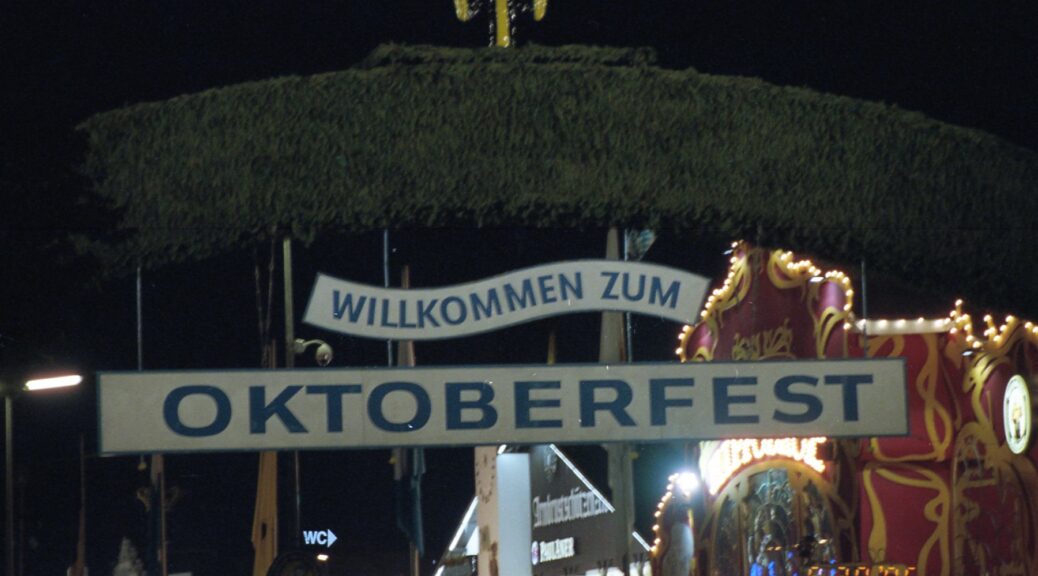
Munich, Oktoberfest
I attended Oktoberfest in 1989 when I was living in West Germany. I mentioned it at work once, talking about the big tents, the music, the crowds, and how much fun it was. My friend and colleague, Kelly, said she’d love to go sometime and would I want to go back? I said, well, when my daughter goes off to college I could go. I’d rather leave an 8-year-old home alone than an 18-year-old. I wouldn’t, of course, but my 8-year-old was quite responsible and I know my house would have a better chance of still standing.
I loved the idea of seeing more of Munich, too, so, in January of 2005, I asked Kelly if she was still interested. She was. Munich hotels fill up quickly during Oktoberfest so we booked flights and a great hostel. September, Tuesday, the 12th, we flew to Munich. We caught the metro from the airport right downtown; our hostel was just a couple blocks from a U-Bahn station, very convenient. We stayed eight nights, from Wednesday to Wednesday and returned Thursday, the 21st.

Theresienwiese fairgrounds have been the site of Oktoberfest every year since 1810 when Munich celebrated the wedding of Prince Ludwig to Princess Therese von Sachsen-Hildburghausen. About 750,000 kegs of beer are tapped each year, whole oxen roasted on open spits, and plenty of brass bands provide the music.
 We were there for the opening day parade. Kelly and I mostly stayed out of the large beer tents because they only served pilsen and we wanted to order our favorite weizen (wheat beer), but we enjoyed visiting to see all the people dancing on tables and hearing the great bands. Our favorite “little” tent was where we could get our Franzkiner, and we also enjoyed the old carousel where we could sit and go round-and-round while having a beer. We also paid for a ride on Ferris wheel for great views.
We were there for the opening day parade. Kelly and I mostly stayed out of the large beer tents because they only served pilsen and we wanted to order our favorite weizen (wheat beer), but we enjoyed visiting to see all the people dancing on tables and hearing the great bands. Our favorite “little” tent was where we could get our Franzkiner, and we also enjoyed the old carousel where we could sit and go round-and-round while having a beer. We also paid for a ride on Ferris wheel for great views.

We spent most evenings at Oktoberfest but we saw a lot of Munich and Bavaria during the day. We did several walking tours with local guides through Munich Walking Tours. We did a city tour, and, if I remember correctly, two different Hitler tours, one about Kristallnacht, and another something like, In the footsteps of Hitler, visiting a number of locations in town where Hitler and his associates met. I learned Kelly liked history, too.
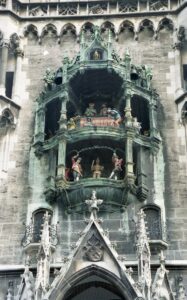 We enjoyed the beautiful Marienplatz. There is a lot to see in this gorgeous old town square, the cultural center of Munich since 1158. The Old Town Hall, New Town Hall, the clock tower or Glockenspiel, with its daily shows and music, Peterskirche and Frauenkirche are all located by the plaza. We visited both churches during the week. Peterskirche, renovated after the war, is all black and white since they had no pictures of the church in color. It is amazingly beautiful.
We enjoyed the beautiful Marienplatz. There is a lot to see in this gorgeous old town square, the cultural center of Munich since 1158. The Old Town Hall, New Town Hall, the clock tower or Glockenspiel, with its daily shows and music, Peterskirche and Frauenkirche are all located by the plaza. We visited both churches during the week. Peterskirche, renovated after the war, is all black and white since they had no pictures of the church in color. It is amazingly beautiful.
Also conveniently located by Marienplatz is the Viktualienmarkt, the huge food market with over 100 vendors. We had lunch here one day during our city tour. The market has a large May Pole worth stopping by to see. We had visited the Hofbrauhaus on our Hitler tour, but went back one evening for a good meal, schnitzel and red cabbage for me, a pork knuckle for Kelly, and a half liter of their beer.
Munich has a great metro system but we did a lot of walking during the week. We saw the Siegestor, or Victory Arch, built by Friedrich con Gartner in 1852 to commemorate the expulsion of French troops from Bavaria between 1813 and 1815. We also visited the Asamkirche and the great Theatinerkirche, with its beautiful yellow facade.
Konigsplatz, King’s Plaza, was used by Hitler as headquarters of the Third Reich. We visited the Propylaea, the city gate on the west side of the plaza. We spent a few hours one afternoon walking through the Englischer Garten and stopped at the Chinese pagoda for a beer.
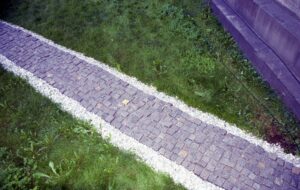
We learned about Stolpersteine, or “stumbling stones” by German sculptor, Gunter Demnig. He started the project to mark locations where victims of Nazism once lived. These stones are in many German cities, but Munich refused to allow them. They were a temporary exhibit in one of the museums and led out on the grounds all the way to the public sidewalk, until they get permission to place them in the city in front of the victim’s former residence. The artist named them “stumbling” stones because he wanted each passer-by to stumble over the past and think about the victims. Munich’s city council voted again in 2015 to ban the stones, stating that the stones do not preserve the dignity of the victims. I disagree, visitors have to stop, lean down to read the name(s), and think about the victims of Nazism.
We visited Nymphenburg one day. It is quite a distance, first by U-Bahn then bus, but worth the trip. The interior is very ornate especially the Great Hall. We also enjoyed the ‘Gallery of Beauties’, 36 paintings commissioned by both Max Emanuel (1710) and King Ludwig I (1827-50) of the most beautiful women of the time. The stories with each painting were very interesting.
The coaches and sleighs are displayed in the former stables. The palace is on 500 acres and the grounds contain a lot of other buildings, also. Magdalenenklause, was built in 1725 to look like a ruin; it was to be used for prayer and solitude. We also visited Amalienburg, the hunting lodge, which was very ornate and Badenburg, the bathing house.
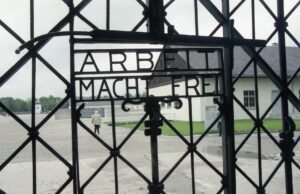 Dachau was the first concentration camp, the model for all that followed. It was built in 1933 on orders from Heinrich Himmler, head of the SS, for political prisoners. More than 30,000 people died here. This is the number of “recorded” deaths; there were more deaths, from disease and exhaustion of the 67,000 liberated by the US Army on 29 April 1945. We watched the video in the information center, then toured through the museum before viewing the camp.
Dachau was the first concentration camp, the model for all that followed. It was built in 1933 on orders from Heinrich Himmler, head of the SS, for political prisoners. More than 30,000 people died here. This is the number of “recorded” deaths; there were more deaths, from disease and exhaustion of the 67,000 liberated by the US Army on 29 April 1945. We watched the video in the information center, then toured through the museum before viewing the camp.
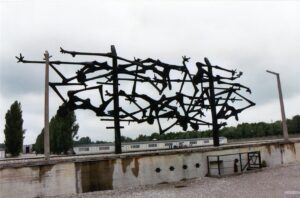 Directly in front, when leaving the museum for the camp, is a sculpture showing people trapped on barbed wire as they tried to escape. Only one barracks building still stands, showing how the prisoners had to live. A building with the ovens and “showers” of poison gas still exists. At the opposite end of the camp from the museum stood a large number of memorials and churches, the Jewish Memorial, the Catholic Mortal Agony of Christ Chapel, the Protestant Church of Reconciliation, and the Carmelite convent and chapel. Kelly and I visited one afternoon, crying all the way through the video and museum and on the guided tour.
Directly in front, when leaving the museum for the camp, is a sculpture showing people trapped on barbed wire as they tried to escape. Only one barracks building still stands, showing how the prisoners had to live. A building with the ovens and “showers” of poison gas still exists. At the opposite end of the camp from the museum stood a large number of memorials and churches, the Jewish Memorial, the Catholic Mortal Agony of Christ Chapel, the Protestant Church of Reconciliation, and the Carmelite convent and chapel. Kelly and I visited one afternoon, crying all the way through the video and museum and on the guided tour.
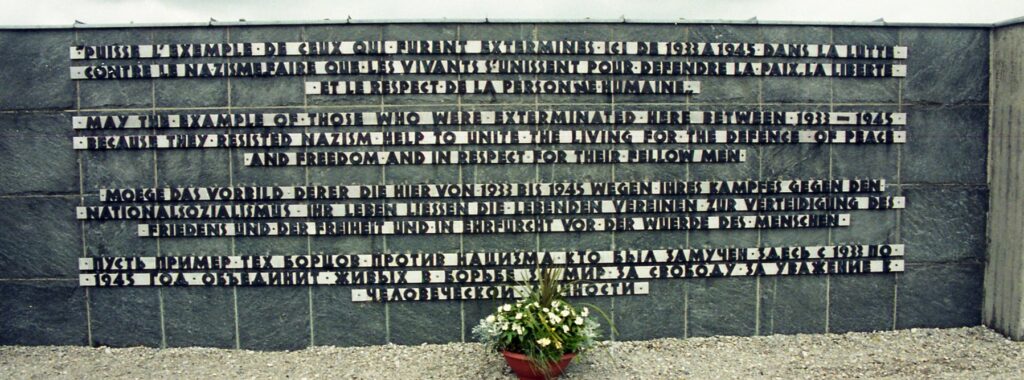
Outside Munich
We rented a car two different days during the week. The first day we drove to Fussen to Ludwig’s castles and the second day, we drove east to Berchtesgaden.
The rental car had a great navigation system that made getting around easy; it was my first experience with in-car navigation.
Ludwig’s Castles
The drive from Munich, about 90 minutes, is lovely and I enjoyed being on the Autobahn again. I could tell Kelly was a little nervous about the speed, but I stayed in the right lane and just went with most of the traffic and she relaxed after realizing I wouldn’t kill her and getting used to the other drivers speeding past, too.
Arriving at Neuschwanstein, we walked to Marienbrucke first. This is the bridge behind Neuschwanstein over the Poellat Gorge. After enjoying the great views, we returned to the castle for a visit. Neuschwanstein, one of the most famous castles in the world, was built by King Ludwig II. It was worked on for 17 years but all work stopped when Ludwig died and it is still unfinished. I think most people have heard that the castle was Walt Disney’s inspiration for Cinderella’s Castle.
We also visited Hohenschwangau Castle, a small castle dating back to the 12th century and the Knights of Schwangau. Prince Maximilian, later King Maximilian II and father of Ludwig, bought the castle in 1832 and completely restored it. Ludwig lived here until he was 17 years old. Unlike Neuschwanstein, which is mostly empty, Hohenschwangau is beautifully furnished.

Berchtesgaden and Obersalzberg
A few days later, we rented the car for a second day to visit Berchtesgaden and Obersalzberg. It was about a two-hour drive. We wanted to visit Kehlstein, or Hitler’s Eagle’s Nest. Unfortunately, it was a cloudy overcast day, not good for the view from the Eagle’s Nest so we didn’t go up but we did get to visit the bunkers.
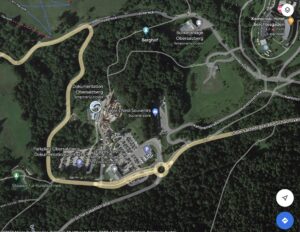 Hitler, Martin Bormann, Hermann Goring all had holiday homes in Obersalzburg, and in 1943, three thousand people worked to connect all their houses and other buildings to a set of underground bunkers that were to be used as air-raid shelters. Last time I was there, 1989, these weren’t open to visitors. The American Army still controlled them and didn’t return them to German ownership until the late ‘90’s. They’ve been stripped of all furniture but are very interesting to see. After visiting the bunkers we drove back to Berchtesgaden and walked around town for a couple hours before driving back to Munich.
Hitler, Martin Bormann, Hermann Goring all had holiday homes in Obersalzburg, and in 1943, three thousand people worked to connect all their houses and other buildings to a set of underground bunkers that were to be used as air-raid shelters. Last time I was there, 1989, these weren’t open to visitors. The American Army still controlled them and didn’t return them to German ownership until the late ‘90’s. They’ve been stripped of all furniture but are very interesting to see. After visiting the bunkers we drove back to Berchtesgaden and walked around town for a couple hours before driving back to Munich.
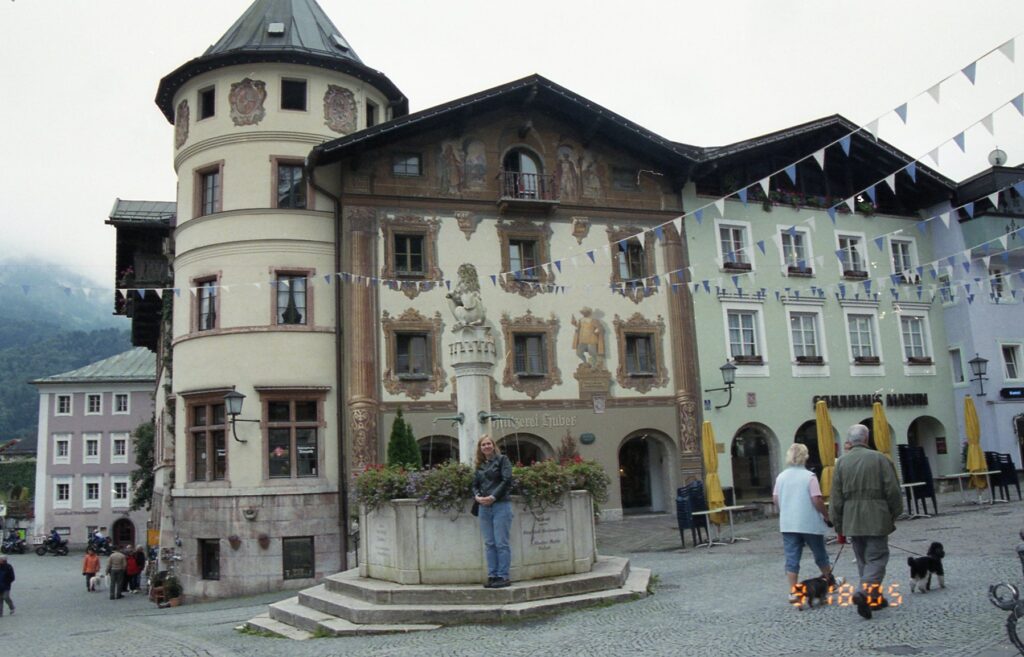
Kelly and I loved our week together. We’d been working together for almost 6 years, had lots of lunches, dinners, happy hours, but you don’t really know how traveling with someone will be. It’s why we only booked a week, but we both had a great time, liking our historical walks, the museums, “foreign food”, and much more. We definitely plan on traveling together again.
** All photos property of Lisa, not to be copied or reproduced **
